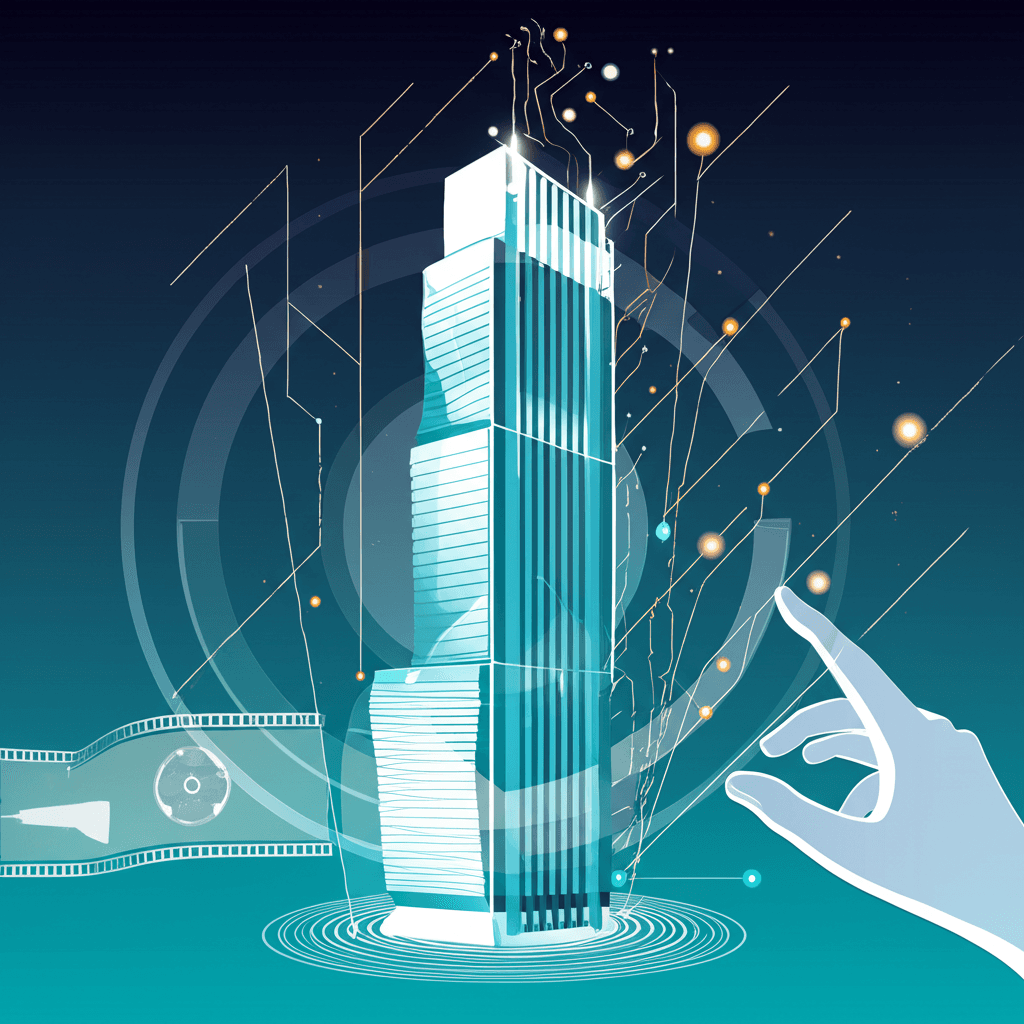Netflix Debuts AI-Generated Visuals for First Time in Original Production
Netflix's "El Eternauta" pioneers AI for final footage, accelerating debate on filmmaking's future, costs, and creative employment.
July 19, 2025

In a move that signals a significant shift in television production, Netflix has employed generative artificial intelligence to create a key visual effects sequence in its new Argentine science fiction series, "El Eternauta." The company's co-CEO, Ted Sarandos, revealed that a scene depicting a collapsing building in Buenos Aires was rendered using AI, marking the first time such technology has been used for final footage in a Netflix original production.[1][2] This development has ignited a broad discussion across the entertainment industry, highlighting the transformative potential of AI in filmmaking while also surfacing deep-seated anxieties about the future of creative professions.
The decision to use generative AI for "El Eternauta," an adaptation of the seminal 1957 Argentine graphic novel, was driven by both economic and creative considerations.[3] Sarandos stated that the complex VFX sequence was completed approximately ten times faster than what would have been possible with traditional methods and at a cost that would have otherwise been prohibitive for the show's budget.[4][5] This efficiency allowed the creators to achieve a high-stakes visual effect, crucial for the series' post-apocalyptic narrative, that might have been compromised or cut entirely due to financial constraints.[6][5] The in-house production technology group at Netflix, Eyeline Studios, partnered with the show's creative team to implement the AI tools, enabling a level of ambitious storytelling on a smaller budget.[1][4] Sarandos emphasized that the goal is to help creators make films and series "better, not just cheaper," framing AI as a tool to enhance, rather than replace, human creativity.[4][2][7]
Based on the iconic comic by Héctor Germán Oesterheld and Francisco Solano López, "El Eternauta" follows a group of survivors navigating a dystopian Buenos Aires after a deadly, alien-induced snowfall.[6][8] The story is a cultural landmark in Argentina, rich with political allegory and themes of solidarity and resilience.[9][8] The series, filmed in Buenos Aires between May and December 2023, utilized a combination of over 35 real locations and 25 virtual sets built with virtual production technology to recreate the story's chilling atmosphere.[9][10] The use of generative AI for the building collapse scene was intended to heighten the epic and apocalyptic tone of the source material.[6][11] This specific application showcases how AI can be integrated into a production to realize a singular, complex visual moment that serves the larger narrative.
The introduction of generative AI into a major streaming production comes at a time of heightened sensitivity and debate within Hollywood. The 2023 strikes by both the writers' and actors' guilds brought the issue of AI to the forefront, with unions fighting for protections against the technology's potential to displace human workers and undermine creative roles.[1][11][12] Concerns persist that AI could be used to replace the work of VFX artists, writers, and other creative professionals, a fear amplified by the rapid advancements in AI models capable of generating realistic images and video from text prompts.[13][14] Critics also raise ethical questions about the vast datasets used to train these AI models, which may include copyrighted material used without permission.[15] Sarandos addressed these concerns by stating, "This is real people doing real work with better tools," positioning AI as a collaborative element in the creative process.[2][16] The industry response remains mixed, with some, like filmmaker Tyler Perry, expressing serious reservations about AI's impact on employment, while others see it as an inevitable and powerful addition to the creative toolkit.[14]
Beyond this initial use in visual effects, Netflix has indicated broader plans for integrating AI across its platform. Co-CEO Greg Peters has spoken about using generative AI to enhance the user experience, such as developing more sophisticated voice-based search tools that can understand complex, conversational queries.[4] The company is also exploring AI's potential in generating advertisements for its ad-supported subscription tier and in improving content personalization and recommendation algorithms, which already drive a significant portion of viewership.[4][7][17] This move into AI-generated production footage is part of a larger strategy by Netflix to leverage artificial intelligence to streamline operations, cut costs, and maintain a competitive edge in the crowded streaming landscape.[6][7] As "El Eternauta" stands as a test case, its reception could serve as a blueprint for the future of entertainment production, where the line between human artistry and machine-generated content becomes increasingly blurred.[6][3] The long-term implications for VFX artists and the wider industry remain uncertain, but Netflix's experiment has undeniably accelerated the conversation about how AI will reshape the creation and consumption of media.[13][18]
Sources
[1]
[2]
[3]
[4]
[10]
[12]
[13]
[14]
[15]
[16]
[18]